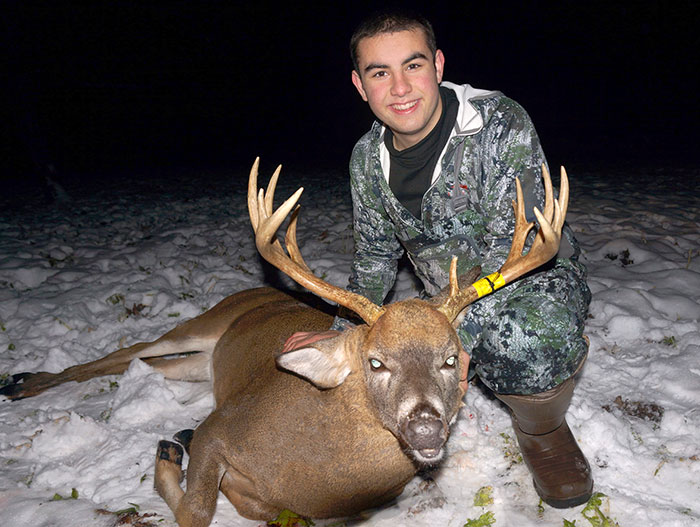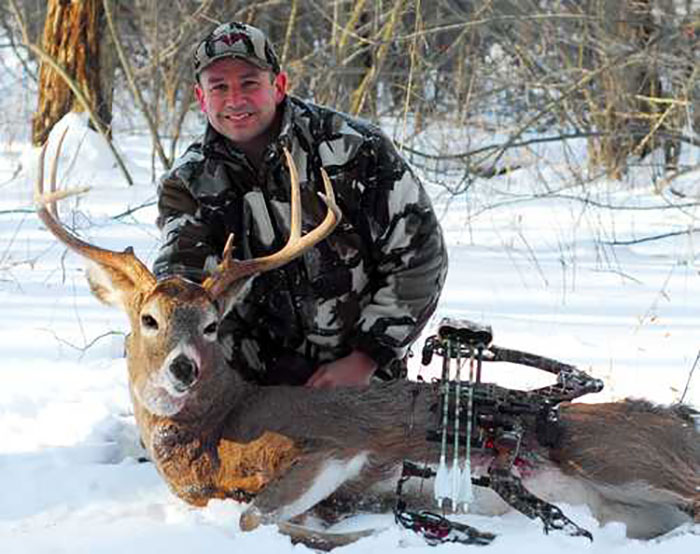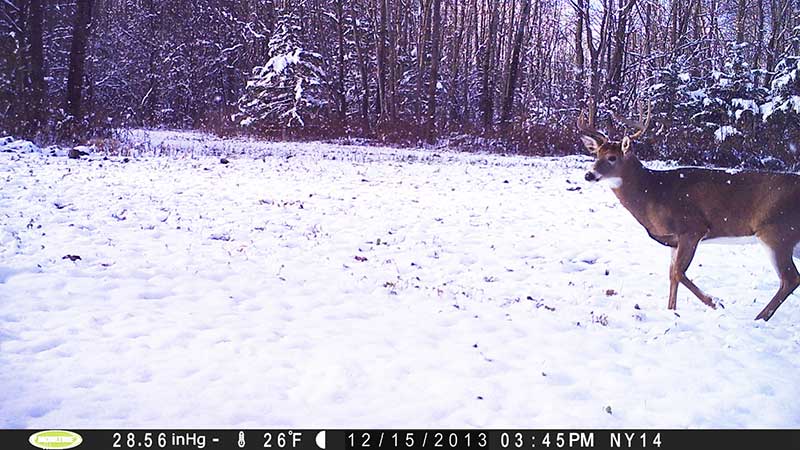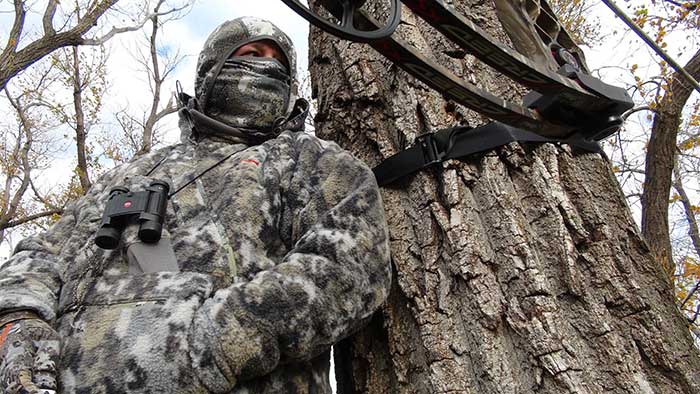Bowsite.com
The Nation's Leading Bowhunting Website
It’s December 1st and you still have a buck tag. Right? Well, that makes 2 of us (or more precisely 2,000,000 of us). All is not lost. I have always considered the post rut month of December to be the very best chance to kill the buck I’m after. Especially in those non-trophy states like New York, Connecticut, Mass, Maryland, Virginia and virtually the entire southern US. Over the years I have learned that my best shot at killing the biggest buck has been in December. This is mainly due to two reason. Bucks focusing on food again, and the critical 2nd rut. Let’s talk about food sources first. Pre-Winter Food SourcesStarting around the first week of December. The does have likely been bred and the bucks are just starting to realize they are hungry again. They are still in rut mode but with every passing day their need for sex will be replaced by their desire for food. Last year my son and I hunted a very big buck on our land in NY. We saw him twice in three years of hunting. Thanksgiving weekend and the weekend of 12/1. It was that weekend when my son Matt killed that buck as he entered our turnip food plot for the very first time in daylight. He was not chasing, he was thinking about food. December better than November?When I was scheduling my vacations I had several choices. I chose the first week of December (this week) over the popular November dates mainly because I have a better chance of killing one of our three mature bucks on my farm. The combination of a waning rut, and increased need for nutrition is the sole factor in that decision. My farm’s food plot strategy revolves around winter food sources and the deer respond to that. My very best chance to kill our big buck will be this week. And what about baited hunts?For areas where baiting is legal, like Southwest CT, MD, and many southern states, the post rut pre-winter time period generally see increased daylight activity around feeders. Regardless of your opinion on baiting, it can be an effective method where legal but the most common complaint is that most mature bucks visit them long after dark. This is true, however in my experience the December post-rut period has worked well for me in one of my areas where both my buddy and I are allowed to utilize bait. In fact, a very wise old 7.5 year old buck that I had hunted for years finally gave me a shot in daylight on 12-22. A giant 8pt with a 24” spread. He would visit my bait every week, but he never showed up in daylight until that December day. Best December food sources to targetWhen determining what food sources to key in on I always look to corn first. Standing corn fields are a giant deer-sucking magnet after 12-1. The carbohydrates in corn provide rapid fat reserves for bucks who are underweight after a busy rut. Beans are a close second, followed by any type of bulb (radish, turnip, and beet) and then acorns starting with the low acidic varieties first and working down to the more sour nuts. Snow helps you to focus your stand locations as well as long distance spotting.
Place your stand on the main trails leading to and from food and bedding areas. One thing I do not do during the post rut is focusing on secondary buck trails. In my areas the bucks seems to follow the does right on the main trails – something they rarely do during the pre-rut periods. Secondary RutIf you are blessed to live and hunt in areas with great buck/doe ratios then congratulations – the primary rut is king. But if you are like most of us, with 10-1 (or worse) ratios then the 2nd rut is by far a more exciting time of year to hunt for that trophy buck in your areas. All depends on your buck/doe ratioThe reason is simple. When too many does go into heat, the bucks basically have nothing to look for. They can stay inside core breeding areas and not come out for two weeks. During the secondary rut everything changes. The ratio of hot does to bucks is more in-line. Competition increases and the bucks will be on the move again looking for both does and food. Where I live in CT, the rut is basically no different than any other time of year. But in December, I’ve seen fights, grunting, snort wheezes and more. The fight is on, only it’s a month later than it should be because there are just too many does.
My strategy is simple, hunt the food sources where the does will be eating during the entire month of December and you have a great shot at killing a mature buck either because he’s motivated by breeding or nutrition. I don’t alter my locations like I will during the rut or pre-rut. It makes things far less complicated. The downsides to Post Rut HuntingWhile I have painted a rosy picture for the post-rut, pre-winter hunting seasons, there are many downsides. Bucks are educatedThe first is obvious, the bucks are educated. They have survived archery, muzzle-loader, and rifle season and that’s not always easy. So you are hunting bucks that are far more cautious than they are in October. Your buck may already be deadAnd this one is pretty simple to understand, your buck may already be dead. It’s possible he didn’t survive the rut and was shot, or hit by a car. In areas of intense rut activity he could have been killed during a fight. This is where my late season Trail cam surveys come into play. I am regularly keeping track of my pics. As of this writing both my #1 and #2 have survived. My son saw him last night but it was too late to shoot. Without a live sighting your trail cams will be invaluable this time of year.
Weather can be miserableThis goes without saying. Prepare to hunt in wind, sleet, snow, and freezing temperatures. Some of these conditions make hunting better, but at the expense of your comfort. Gone are the days where I hunted in cheap junky clothing. An investment in quality late season clothing can pay dividends. The single best whitetail clothing system I have ever used has been Sitka Gear’s Fanatic system. I am currently field testing their 2015 year and can say without hesitation that it is by far the best system available for both the regular and late season stand hunter. |










